How to milk a cow by hand. The simple process of milking a cow (or goat) from cleaning to milking, to what to do with the milk afterwards.
This post may contain affiliate links. Read my disclosure policy here.
If there’s something that’ll get me out of bed early in the morning, it’s milking our cow Charlotte.
It has become such a special routine for me.
I throw on my robe, grab my milking supplies, fill up a pitcher with warm soapy water, and then Luke and I both head out the door.
We each squat on a side and quietly milk while Charlotte munches on her alfalfa pellets and hay.
We talk about what we want to do that day.
I rest my face against Charlotte’s warm side.
The calf lays quietly in his pen waiting to come out for the day.
Three gallons of warm raw milk later, we are all done.
Luke lets the calf out and unhooks Charlotte from her lead rope.
We gather up all our supplies and go in the house to filter and chill the milk.
Then we sit with a warm cup of espresso and steamed cream from yesterday’s milk.
It’s literally the perfect way to start the day.
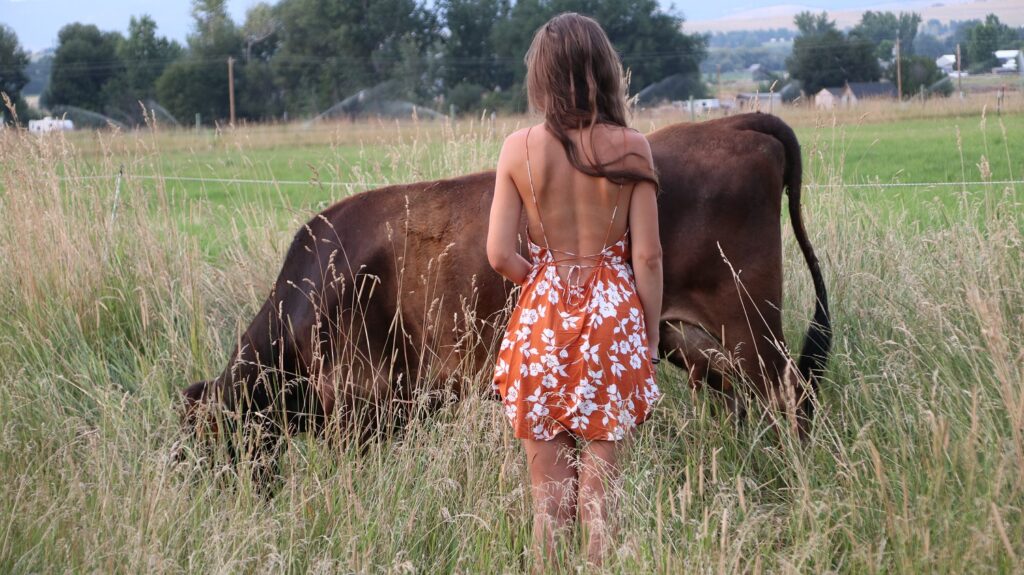
I grew up milking Nigerian Dwarf goats…
so I kind of already had a good idea of the hand motion and how to do it.
There is just a bit of a difference though. With goats you push up just slightly into the udder as you squeeze so that it doesn’t stretch out their teats. But with cows you just stay stationary. So that took my brain just a little bit of time to un-do the years of training my muscles to push up into the udder, but after a few milkings I felt like I had a pretty good rhythm down.
Your hands will definitely be quite sore and tired for the first weeks while your muscles are adjusting to the new exercise.
But its good to have strong hands! It’ll make all my work easier!
Stronger hands from milking and stronger legs from squatting the whole 40 to 60 minutes it takes me to milk on my own right now!
How to milk a cow by hand
Clean the udder and teats
Thankfully Charlotte isn’t one of those cows that likes to lay in her own manure. Some cows like to stick their udder right in the fresh cow pie to take a nap because it’s warm. Gross!
So far we haven’t had any manure get on the udder, but I still clean it off every single time.
Before we go out I prepare a pitcher with hot water from the tap, some of my own homemade coconut oil soap so it’s nice and gentle on her skin, and a splash of raw apple cider vinegar. I have plain white 100% cotton cloths that are perfect for getting any gunk off, and then I take a more gentle cotton cloth for the second wash.
I use the rougher cloth to do the first wash of the udder and teats, that cloth never goes back in the soapy water.
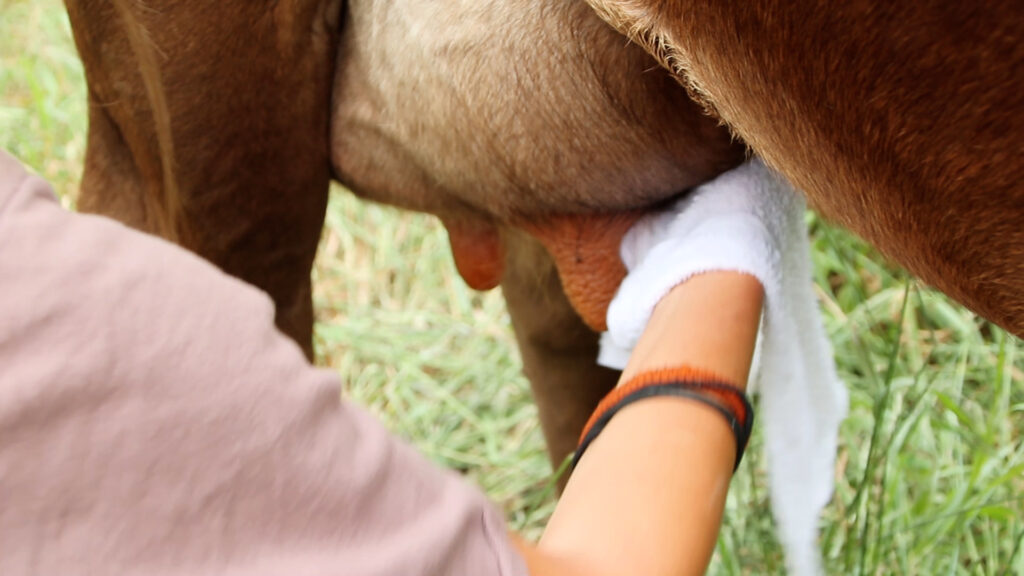
Then I do an iodine dip.
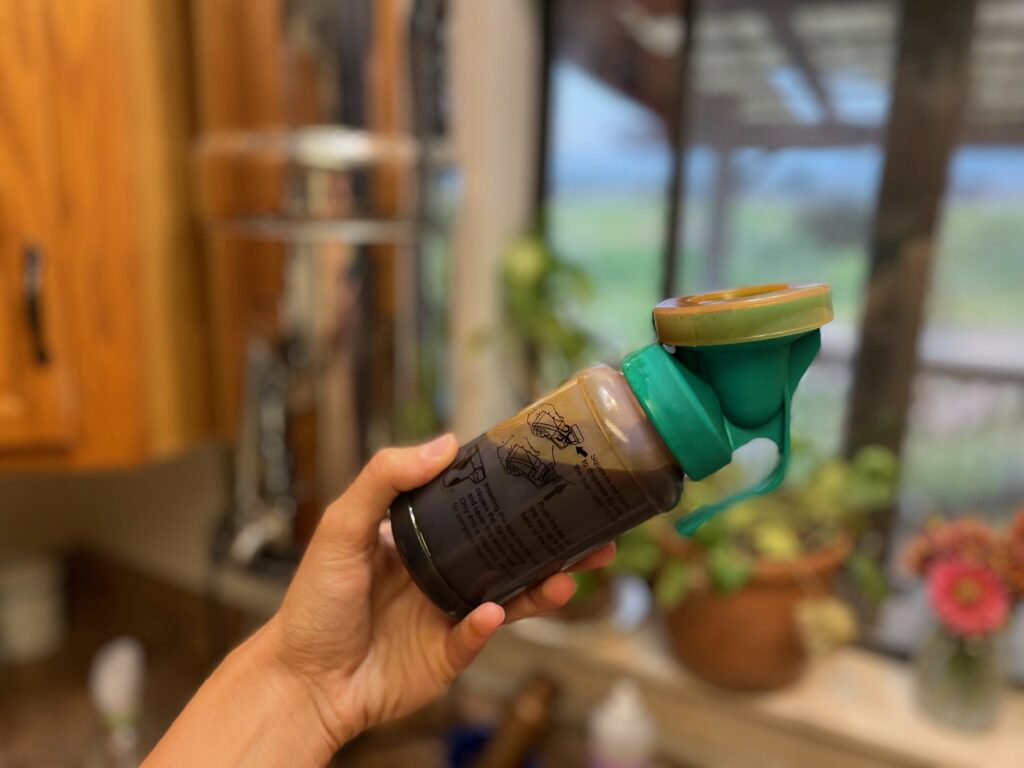
Then I do a second wash with the softer cloth to get the iodine off and make sure the first wash was good enough.
That one goes back in the soapy water pitcher because I’ll use it incase she feels the need to pee or poop during milking. If I see her about to “go” I move my milk bucket a safe distance away so it doesn’t splash in, and then when she’s done I wipe her udder and teats down again before resuming milking.
Using warm water to wash the udder also helps them let down their milk. You can take extra time on this step if your cow isn’t letting down very easily, doing more of a massage with the warm cloth. It should help some!
Strip the beginning milk out
Now I do just a few squeezes of milk out of each teat onto the ground. The first few squeezes have the highest bacterial count since they were right at the opening of the teat, so I don’t save those with the rest of our milk. About 3 squeezes out of each of the four quadrants.
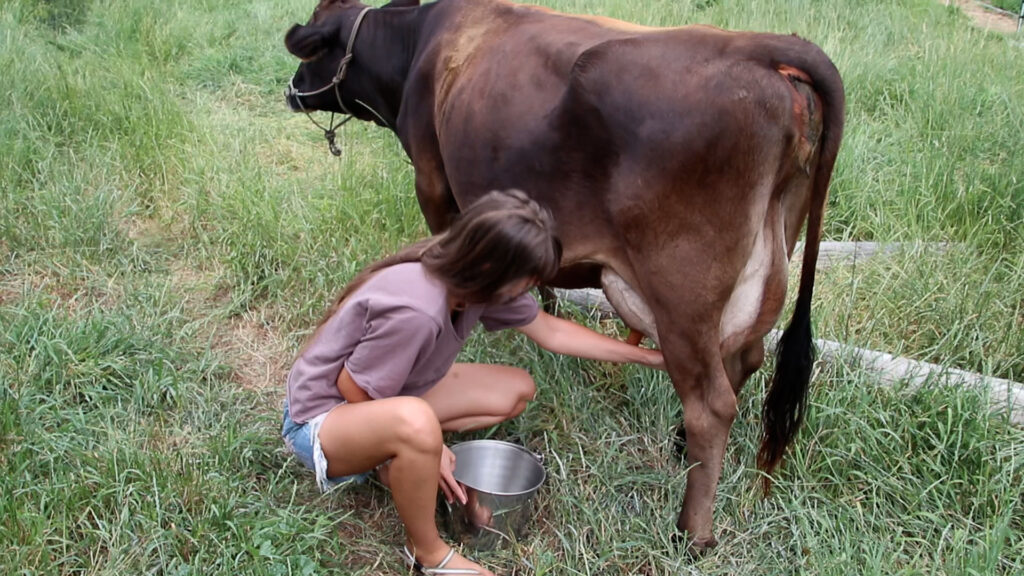
Start milking
Now I grab the bucket and get to milking!
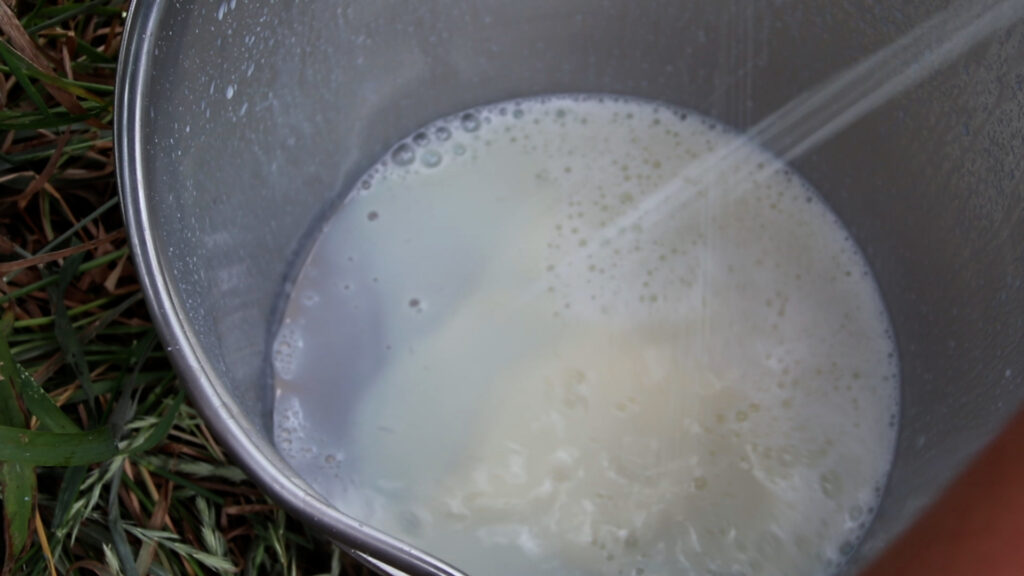
Grasp the top of the teat with your thumb and index finger trapping the milk in the teat canal.
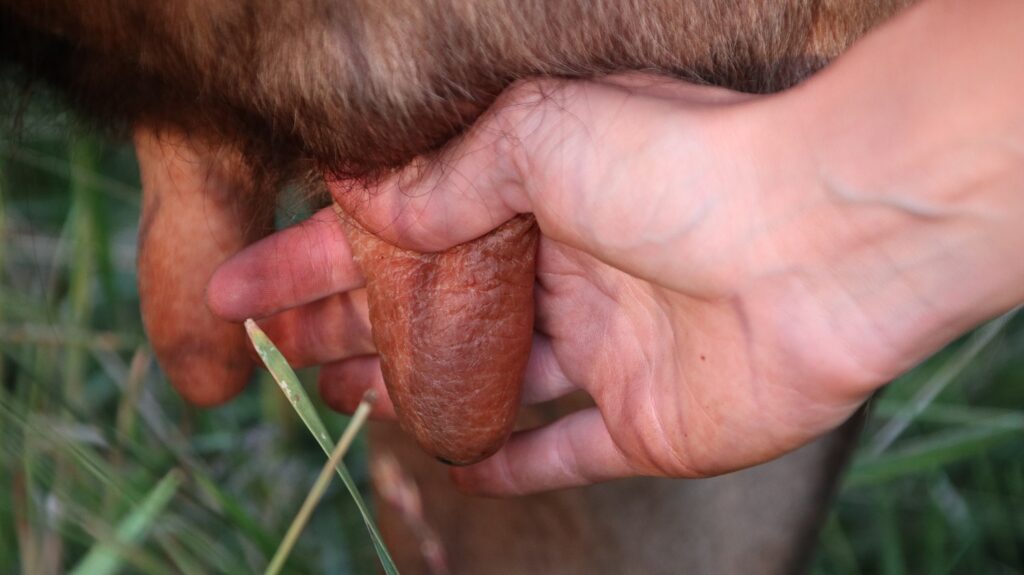
Then use the rest of your fingers to squeeze the milk down and out of the opening.
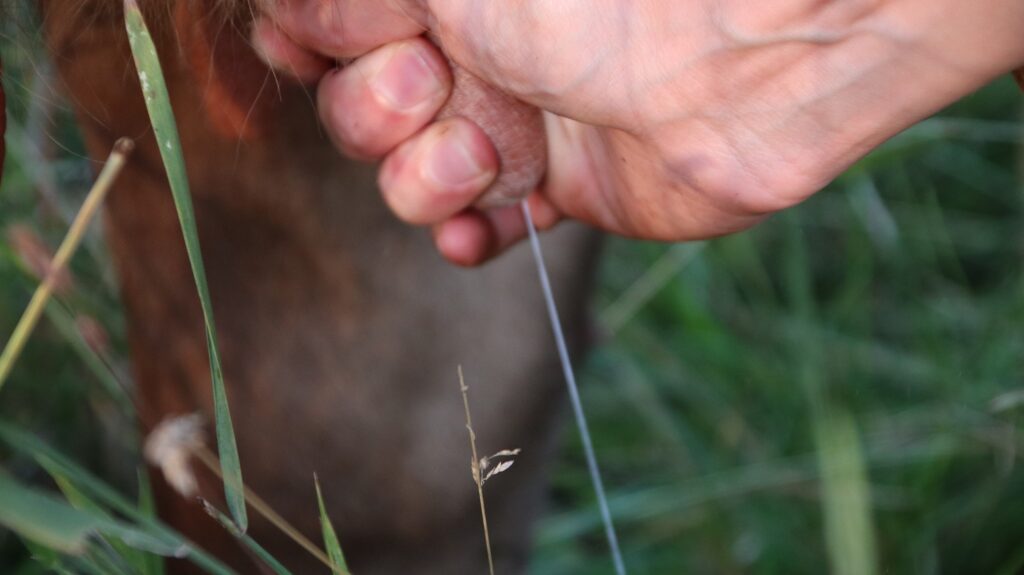
Remember to be gentle with them. There’s no need to be aggressive with their udder.
Continue milking like this until they stop giving milk and their udder feels soft and emptier. (note: if you’re calf sharing they won’t ever completely give you everything)
Keeping your milk safe
I milk into a 2.5 gallon stainless steel bucket and I have a 5 gallon stainless steel bucket set off to the side, a safe distance away, with a large muslin towel over the top to keep bugs or dirt out. When the 2.5 gallon pail is about halfway full I take it over and dump it into the bigger bucket. I usually have to do that several times since we are getting about 3 gallons of milk per milking right now.
Code: WILSONFAMILYHOMESTEAD for a discount on the buckets
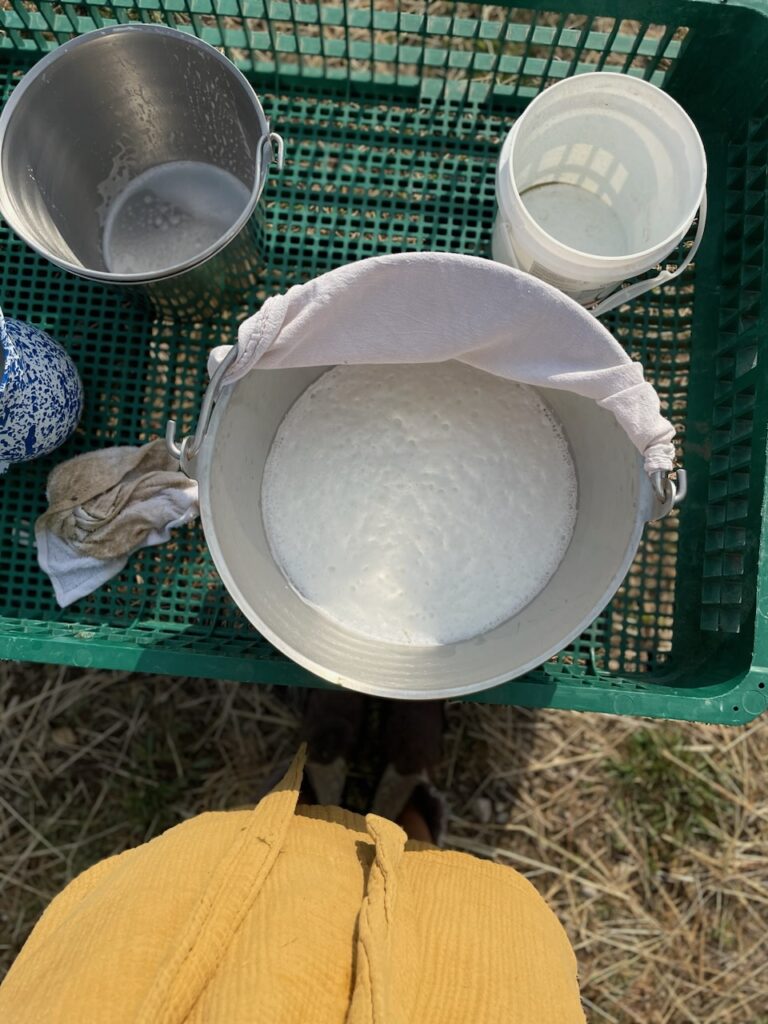
This method makes sure that you do end up with at least some fresh clean milk. Charlotte is not a kicker at all, but she moves around a little since we don’t use a stanchion. It would take a lot of effort to move around that huge 5 gallon bucket full of milk as we are getting closer to the end of the milking, and if it spills then there goes all the milk for the day.
At least if she spills or steps in the smaller bucket, it’s just a small loss. If she were ever to step in the bucket (which hasn’t happened yet), I’d take it inside and thoroughly wash it out before continuing on.
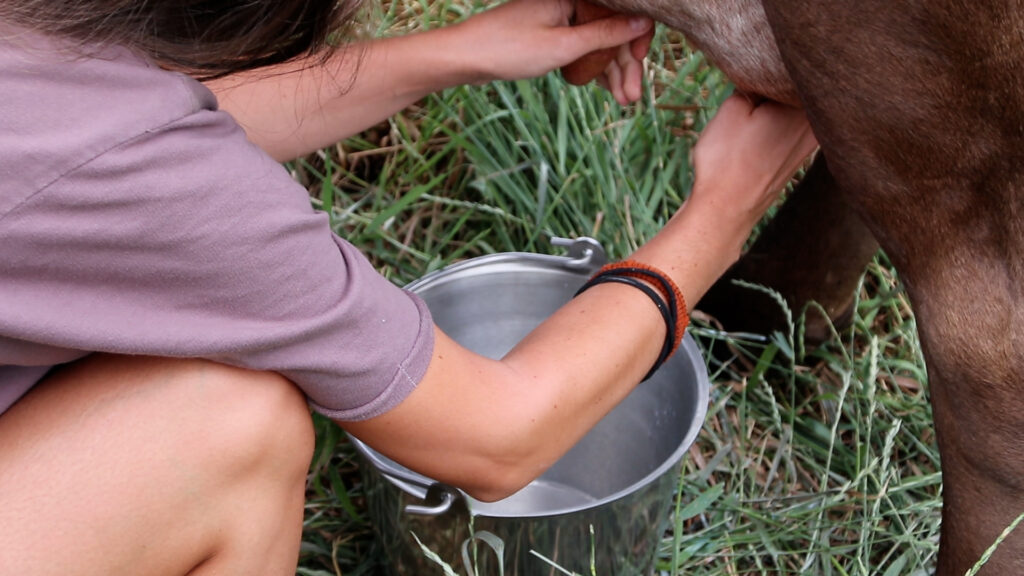
Towards the end of the milking her teat will not refill as quickly.
You can tell the udder is empty because it looks and feels empty. Once your cow’s udder is emptied out completely, you are finished milking and can let her go back to her pasture. And I also let the calf out of his holding pen where he has been overnight.
Filter and chill
I quickly haul all the milk into the house. I make sure to get my filter and jars all set up before I even go out in the morning so I can get it filtered fast.
This is where I get my stainless steel funnel and filters that fit inside. Code WILSONFAMILYHOMESTEAD for a discount at checkout.
Just start pouring the milk into the big funnel with the filter at the bottom and moving it to a new jar when that one is full.
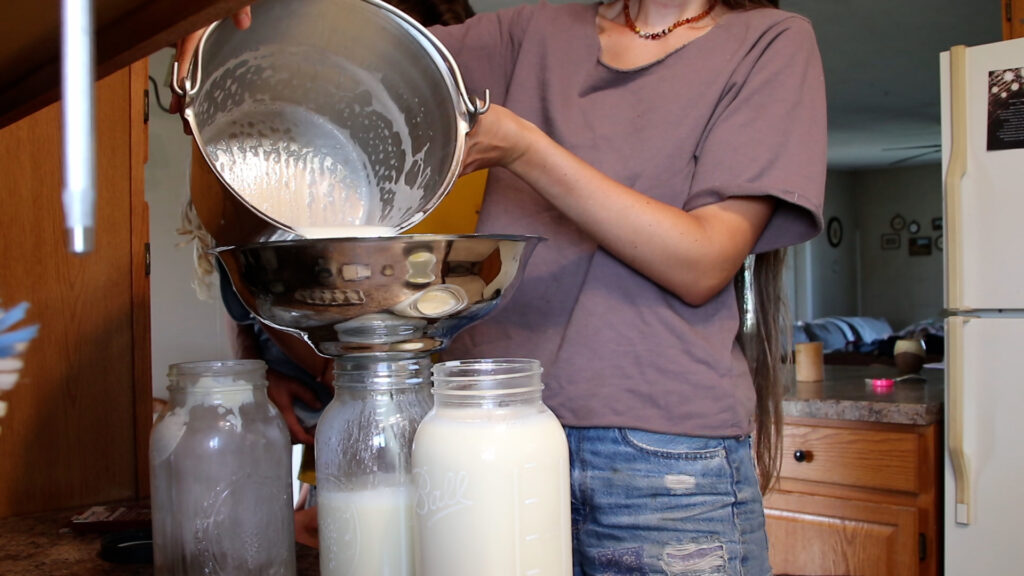
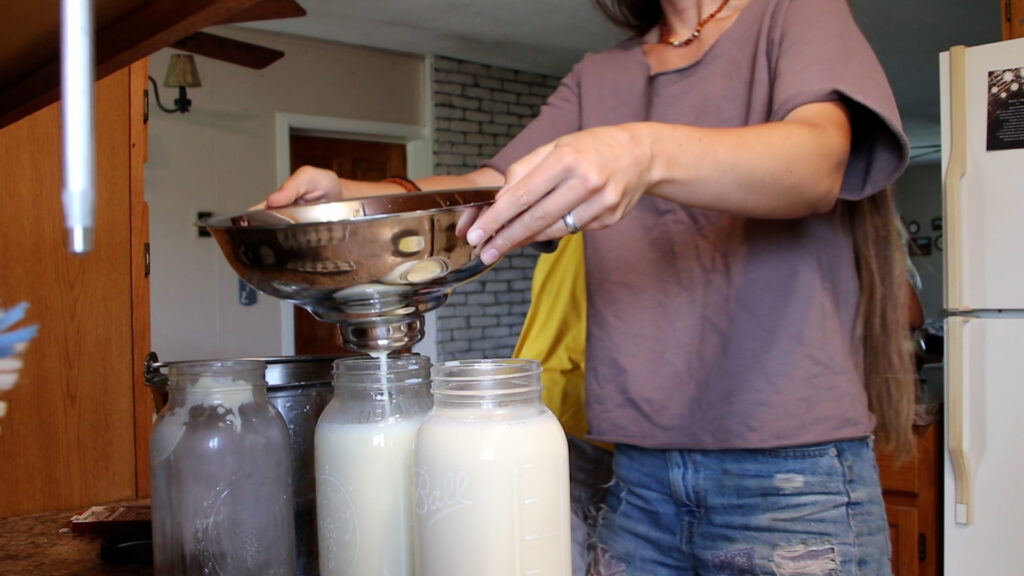
Once all the milk is filtered I mark the date on the jar and carry them all out to the entryway to get chilled.
I use a separate refrigerator from our house fridge so that I can have it set to the lowest temperature setting and it won’t freeze any of our food. If you don’t have access to a second fridge then you can pop the milk in the freezer for 30 minutes and then move it to the fridge. Just don’t forget it’s there!
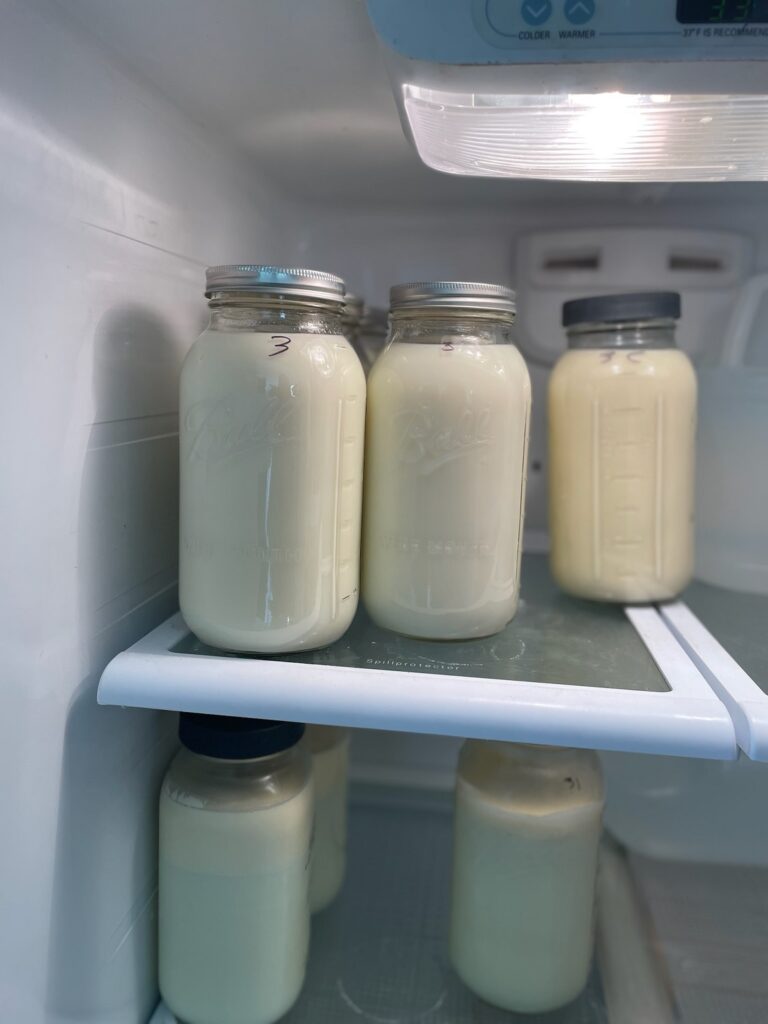
And that’s how to milk a cow by hand! After some time and practice you will fall into a really nice calm routine that you look forward to every morning.
It’s actually all quite manageable! I wish we had added a milk cow a lot sooner seeing how easy it actually is and since we only have to milk once a day (thanks to calf sharing).
Tell me, have you guys milked a cow before? Do you have a milk cow of your own? Hoping to get one someday?
And beannachdan (blessings)!
Pin it for later!
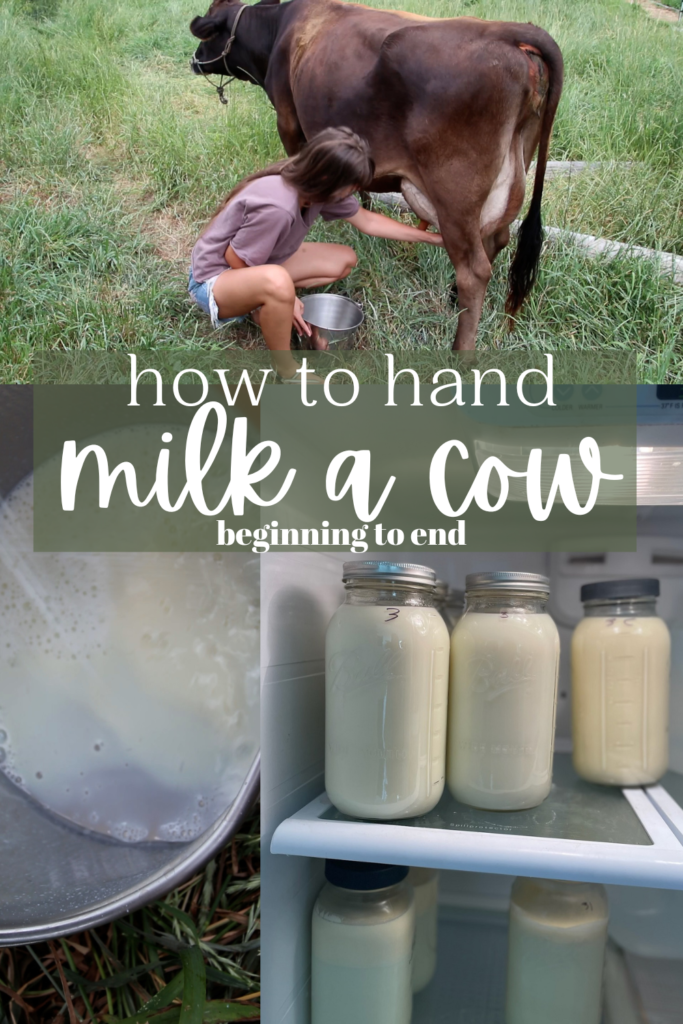

I really want to get a milking cow but I’m worried I won’t have enough space for one. And what happens if you miss a day of milking? Does the milk go away eventually like with humans?
If you’re willing to buy hay for a cow you really don’t need much space at all.
Missing a day of milking isn’t a big deal if you’re calf sharing, you just don’t separate the calf the night before so they’ll drink everything you would have milked out.
Yes, it slowly tapers down in production and you fully dry them off around a bit before they’re going to have their next calf.
I loved this article. You are so inspiring and your content makes me happy 😊
Thank you!! 🙂
Love this thank you! So informative!
I would be really interested in an article about your process for sterilising / cleaning the equipment you use in this process 🙂
Love this! Thank you for the details and pictures!!! We are working on finding a dairy cow and I’m excited and nervous!